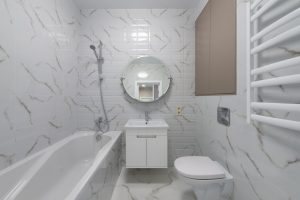Plumbing: Saving Energy In The Bathroom
It is possible to save energy in the bathroom and with a few simple tips, it is an easy task.
High gas prices are tempting more and more people to keep a closer eye on their electricity consumption. But regardless of the cost aspect, it makes sense from an ecological point of view to save energy in order to conserve resources and live more climate-friendly. In the bathroom, you use most of the electricity for warm water, heating, and the washing machine.
Hot water consumption and plumbing service leak detection
The energy required for hot water is particularly high if the water in your household is heated with electricity. This is the case, for example, if you live in a building with an instantaneous water heater. According to CO2-Online, the total electricity consumption for a family of four then amounts to an average of 5,000-kilowatt hours per year. This corresponds to 2,340 kilograms of CO₂ that is released and enters the atmosphere.
If water is heated without electricity, electricity consumption is reduced by around 1,000-kilowatt hours per year and to 1,870 kilograms of CO₂. This works, for example, if you have a solar system on the roof that is also suitable for generating hot water. In both cases, however, it makes sense to take a closer look at your hot water consumption. Humans often waste hot water and thus have a significantly higher energy consumption than is actually necessary. Thus, it is important to get reliable plumbing services for leak detection, water heater repair, and others.

Saving energy in the bathroom: heat properly
In the bathroom, many people want it to be nice and warm so that they don’t freeze while they’re cleaning their bodies. The optimum room temperature in the bathroom is therefore around 20 to 23 degrees Celsius. With a few tricks, you can easily maintain this temperature and still save energy in the bathroom.
Maintain a constant temperature. On the other hand, switching off the heating completely from time to time increases energy consumption. Because completely heating up the bathroom again costs a lot of energy.
Use a heater with a thermostat. The thermostat ensures that a certain set temperature is not exceeded.
To avoid mold, it makes sense to ventilate. You should not leave the window open for hours, especially on colder days. Instead, it makes more sense to ventilate for a few minutes immediately after showering or bathing. When airing out, make sure there is a draught, for example by opening the opposite window or door.
